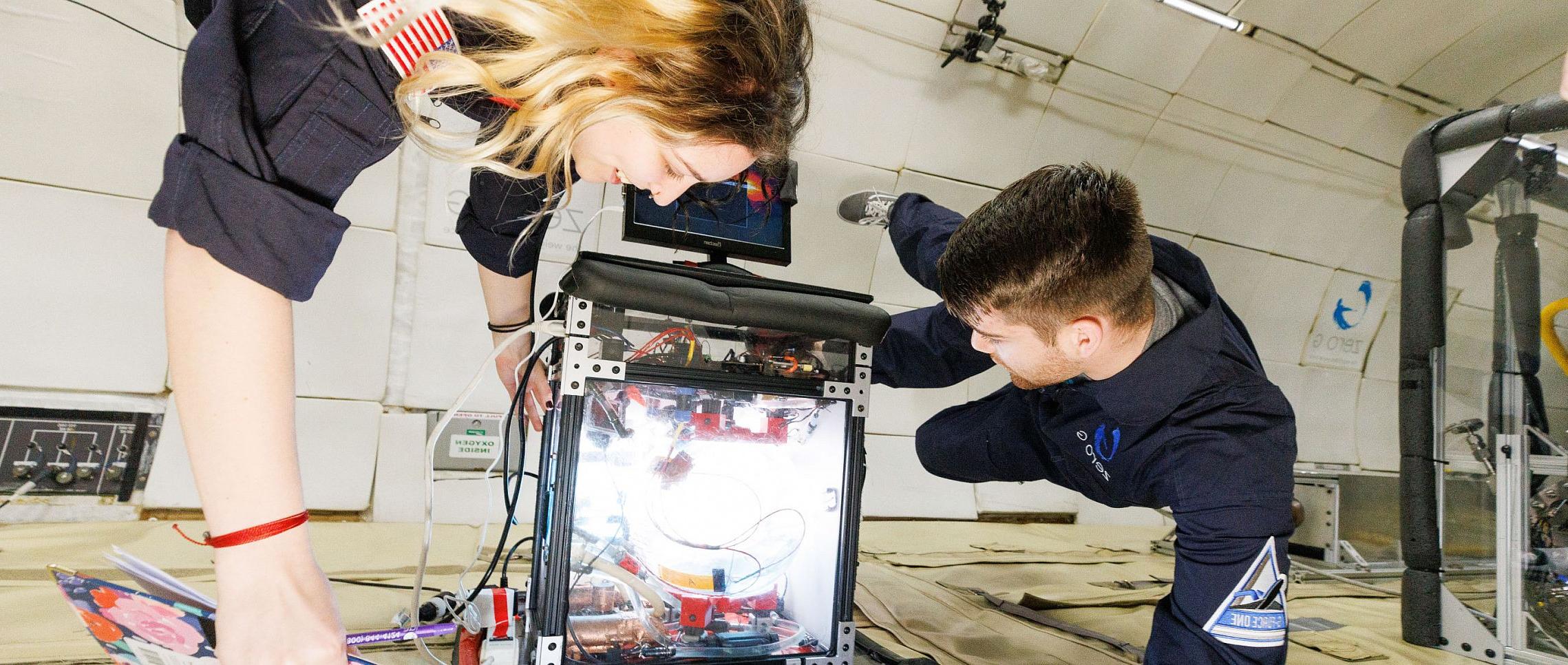Current Projects

Interested in conducting research with NASA?
Carthage’s nationally recognized undergraduate Space Sciences Program allows students to get hands-on opportunities in technology development and atmospheric sciences through partnerships with NASA and academic researchers around the world. Additionally, the College is the home to the Wisconsin Space Grant Consortium, which provides students with unique opportunities to work with on NASA and other commercial projects. Carthage regularly conducts research using NASA’s zero-gravity aircraft to develop technology for space hardware, design and build experiments to be flown on NASA spacecrafts, and build groundbreaking satellites that can provide multispectral images of Earth, while traveling across the country.

The Carthage Space Sciences Lab is currently partnering with the NASA Johnson Space Center to develop prototype hardware to demonstrate the use of phased array ultrasonic fields to cause the formation, migration, and collection of helium bubbles in liquid propellants.
The MUT program is supported by the NASA Science Mission Directorate Grant.

NASA supports Carthage in the development of a technology to use Macro Fiber Composite (MFC) sensors as sensitive detectors of the ullage location and movement inside a propellant tank. This real-time method tracks the dynamics of the ullage and reconstructs its location and size inside the tank.
The MUD program is supported by the NASA Space Technology Mission Directorate Grant.

The FOSS program is supported by the NASA T2U program.

The PROTO program is supported by NASA Flight Opportunity Program grant #80NSSC20K0105.

The Intuitive Machines collaboration program is supported by contracts with the NASA Johnson Space Center EP division.

The SSL participation in the NASA UPIC program is supported by the NASA Flight Opportunities Program.
